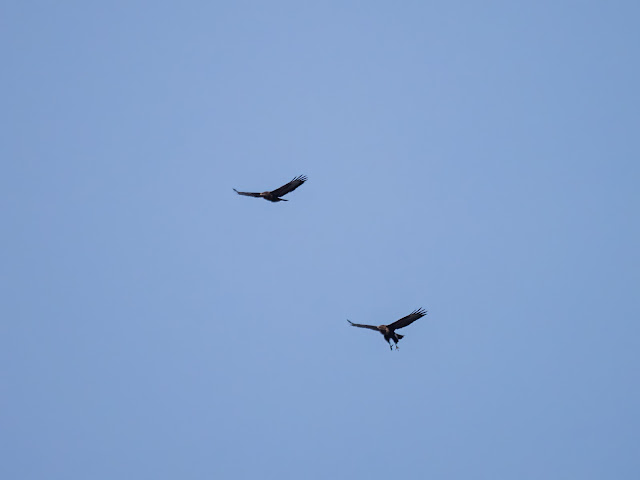I had another Common Buzzard record this morning at 6:30 a.m., a super-early sighting of a single bird flying low and in a north westerly direction over the woodland beyond the houses opposite my flat.
I have recorded Common Buzzard sightings from my flat since 2021. Sightings are increasing and last year I was almost convinced that there was a resident and possibly nesting pair in the area since I also frequently saw birds over my nearby local patch site around St. Nicholas Church.
This is the summary of my Common Buzzard sightings from my flat for the last 2 years ....
2021: 11 dates with those records involving 13 birds
2022: 26 dates with those records involving 38 birds
This is the summary of my Common Buzzard sightings from my flat for 2023 to date ....
February: 23rd (a single bird)
March: 11th (a single bird), 12th (a single bird), 18th March 2023 (a single bird), 19th March 2023 (a single bird), 30th March (a single bird)
2023 to date: 6 dates with those records involving 6 birds
#DefendNature .... Please help save and enhance our laws that protect our environment and wildlife
💚🦆 🦉🦋🐝🦊🦡🌼 🌳💚
Stay safe, stay well, stay strong, stay connected with nature







































